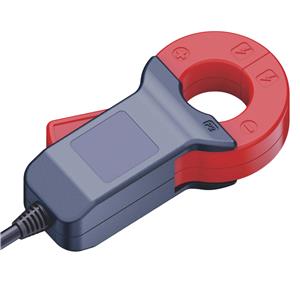Troubleshooting and Maintenance of Voltage Transformers
Troubleshooting and Maintenance of Voltage Transformers
Voltage transformers (VTs) are critical components in power systems, and their proper operation is essential for accurate voltage measurement and control. However, like any other electrical equipment, VTs can fail due to various reasons, leading to reduced system performance and safety hazards. In this blog post, we will discuss common causes of VT failures and ways to troubleshoot and maintain them.
Causes of Voltage Transformer Failures
1. Overloading: VTs can fail due to overloading, especially when they are subjected to excessive voltage or current. Overloading can cause insulation breakdown and lead to short circuits or open circuits.
2. Environmental Factors: Environmental factors such as humidity, temperature, and dust can also contribute to VT failures. High humidity levels can cause insulation degradation, while extreme temperatures can affect the VT's performance and accuracy. Dust and dirt can accumulate on the VT's surface and cause insulation breakdown or affect the VT's cooling system.
3. Age: VTs have a limited lifespan, and their performance can deteriorate over time. Aging can cause insulation breakdown, leading to reduced accuracy and reliability.
4. Mechanical Damage: VTs can also fail due to mechanical damage caused by improper installation, vibration, or impact. Mechanical damage can cause insulation breakdown, open circuits, or short circuits.
Troubleshooting VT Failures
1. Visual Inspection: The first step in troubleshooting VT failures is to conduct a visual inspection of the equipment. Check for any signs of damage, such as cracks, loose connections, or discoloration. Also, check for any foreign substances or debris that may have accumulated on the VT's surface.
2. Electrical Testing: Next, perform electrical testing to determine the cause of the VT failure. Use a multimeter to check the VT's voltage output and compare it to the input voltage. If the output voltage is significantly different from the input voltage, it may indicate a problem with the VT's winding or insulation.
3. Insulation Resistance Testing: Insulation resistance testing is essential to determine the insulation condition of the VT. Use a megohmmeter to measure the insulation resistance between the VT's primary and secondary windings. If the insulation resistance is below the recommended value, it may indicate insulation breakdown.
4. Load Test: Load testing is another method to troubleshoot VT failures. Apply a known load to the VT and measure the output voltage. If the output voltage is significantly different from the expected value, it may indicate a problem with the VT's load capacity or winding.
Maintenance of Voltage Transformers
1. Regular Inspection: Schedule regular inspections of VTs to check for signs of damage or deterioration. Clean the VT's surface regularly to prevent dust and dirt accumulation.
2. Calibration: Calibrate VTs regularly to ensure accurate voltage measurement and control. Use a known voltage source to compare the VT's output voltage to the input voltage and adjust the VT if necessary.
3. Temperature Control: Control the temperature around the VT to prevent extreme temperature fluctuations. Use fans or cooling systems to maintain the VT's temperature within the recommended range.
4. Replacement: Replace VTs that have exceeded their useful lifespan or those that are damaged beyond repair. Do not attempt to repair or modify VTs unless you have the necessary skills and equipment.
In conclusion, troubleshooting and maintaining VTs is essential to ensure accurate voltage measurement and control and prevent safety hazards. By following the recommended maintenance procedures and conducting regular inspections, you can extend the lifespan of your VTs and avoid costly failures.




